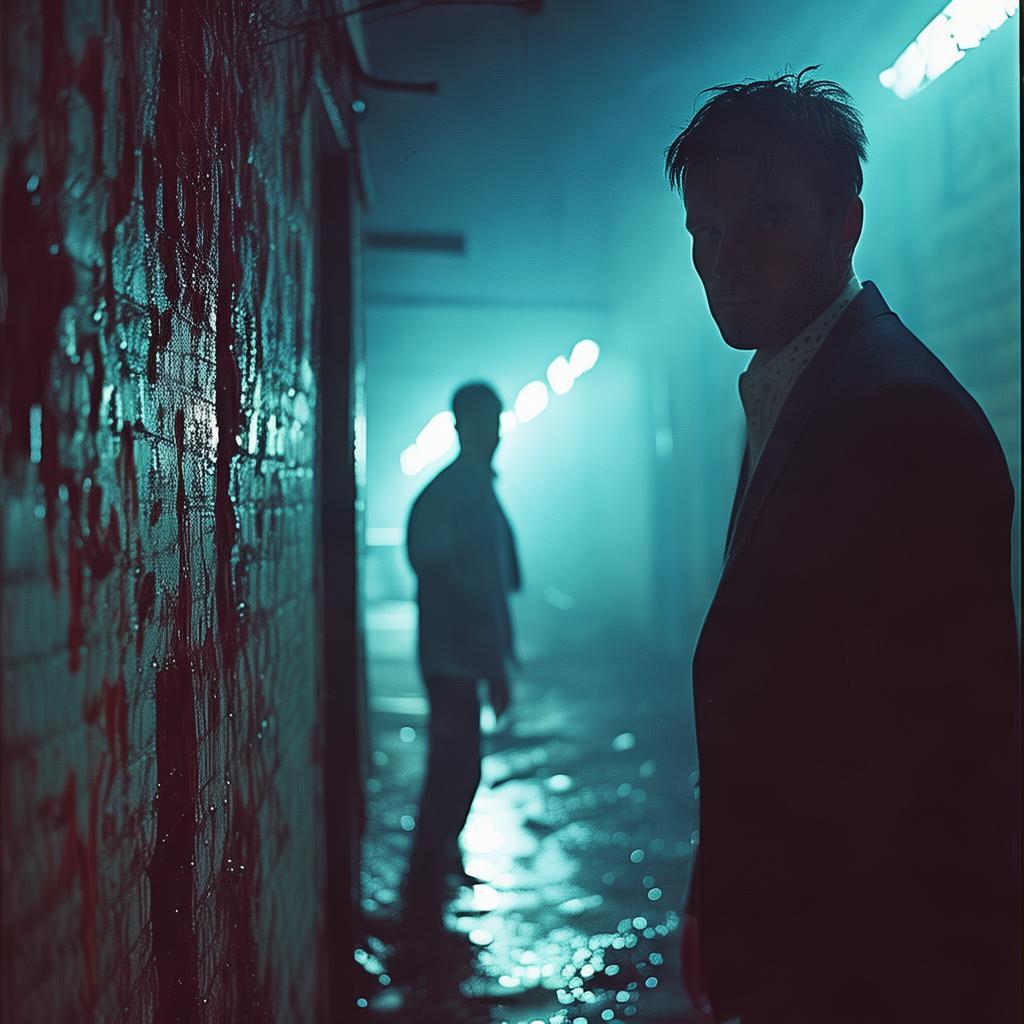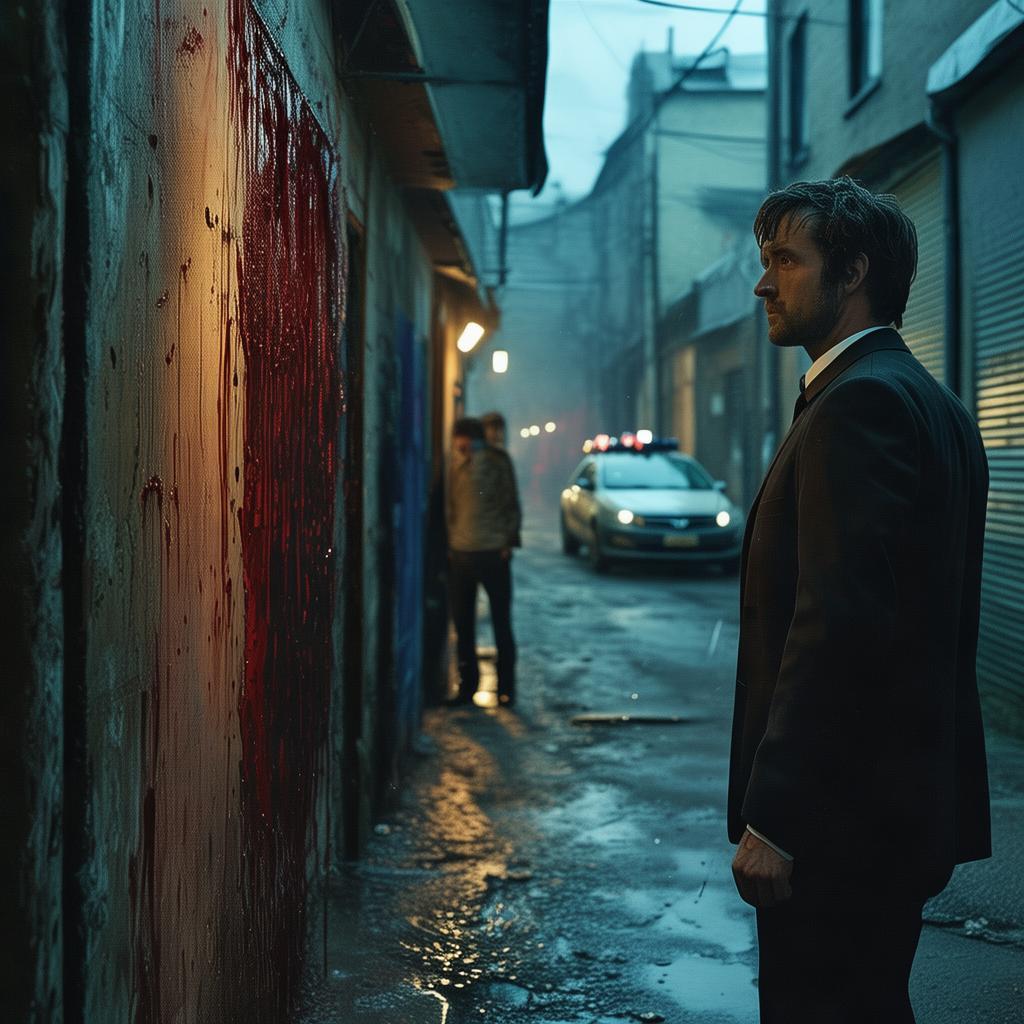The Shadow of Tongzhou's Tide
The night was as dark as the waters of the Grand Canal that snaked through Tongzhou, a city known for its ancient canals and bustling markets. The air was thick with humidity, and the stars were obscured by a dense fog that clung to the buildings like a shroud. In this eerie atmosphere, a series of mysterious deaths began to unfold, each with a connection to the water's edge.
Detective Li Wei, a seasoned officer with the Tongzhou police department, was called to the scene of the first murder. The victim, a young woman, had been found floating in the canal, her body drained of blood, as if she had been drained of life itself. The only clue was a crimson tide that had washed up on the banks, a macabre omen that would become the defining feature of the killer's modus operandi.
Li Wei knew that the killer was watching him. The evidence was all around: the crimson tide, the choice of location, the method of death. It was as if the killer was taunting him, challenging him to find the truth. But Li Wei was not one to back down from a challenge. He was determined to bring the killer to justice, no matter the cost.
As the investigation unfolded, Li Wei learned that the deaths were not random. Each victim had a connection to the city's history, to the Grand Canal, and to the water's edge. The killer seemed to be sending a message, a cryptic message that only Li Wei could decipher. The detective's only lead was a strange symbol etched into the ground near the first crime scene, a symbol that seemed to be a part of an ancient code.
Li Wei's investigation led him to the city's archives, where he discovered a long-forgotten tale of a serial killer who had terrorized Tongzhou in the 19th century. The similarities between the old case and the new were chilling. The killer had been known for his crimson tide, for his connection to the water's edge, and for his cryptic messages. Could the new killer be a descendant of the old one?
Li Wei's search for answers took him to the heart of Tongzhou's underbelly, where he encountered a world of secrets and lies. He met with a group of street performers who spoke of a ghostly presence that haunted the canal at night, a presence that seemed to be responsible for the deaths. They spoke of a man with a twisted sense of justice, a man who believed that the city needed to be cleansed of its past sins.
As Li Wei delved deeper into the case, he discovered that the killer was not just a serial murderer; he was also a mastermind who manipulated the city's fears to his advantage. The crimson tide was not just a symbol of death; it was a reminder of the city's dark past. The killer was using his victims to cleanse the city, to atone for its sins.

The climax of the story came when Li Wei finally confronted the killer. The confrontation took place at the Grand Canal, at the very place where the first victim had been found. The killer, a man in his 30s with a twisted sense of morality, revealed his true identity. He was a man who had grown up in the shadow of the old killer's legend, a man who believed that he was destined to continue the legacy.
The final act of the confrontation was intense and emotional. Li Wei, driven by a sense of justice and a deep-seated respect for the law, was forced to make a difficult decision. He had to choose between his duty as a detective and his respect for the human life before him. In the end, he chose duty, and the killer was taken into custody.
The story of the serial killer and the crimson tides of Tongzhou came to an end, but the city's history was forever changed. The Grand Canal, once a symbol of the city's prosperity, had become a place of fear and mystery. However, the city's people learned to look beyond the surface, to understand that sometimes, the truth is not what it seems.
The Shadow of Tongzhou's Tide is a story of justice, of the enduring power of the human spirit, and of the dark side of human nature. It is a tale that will stay with readers long after they have turned the final page.
✨ Original Statement ✨
All articles published on this website (including but not limited to text, images, videos, and other content) are original or authorized for reposting and are protected by relevant laws. Without the explicit written permission of this website, no individual or organization may copy, modify, repost, or use the content for commercial purposes.
If you need to quote or cooperate, please contact this site for authorization. We reserve the right to pursue legal responsibility for any unauthorized use.
Hereby declared.









